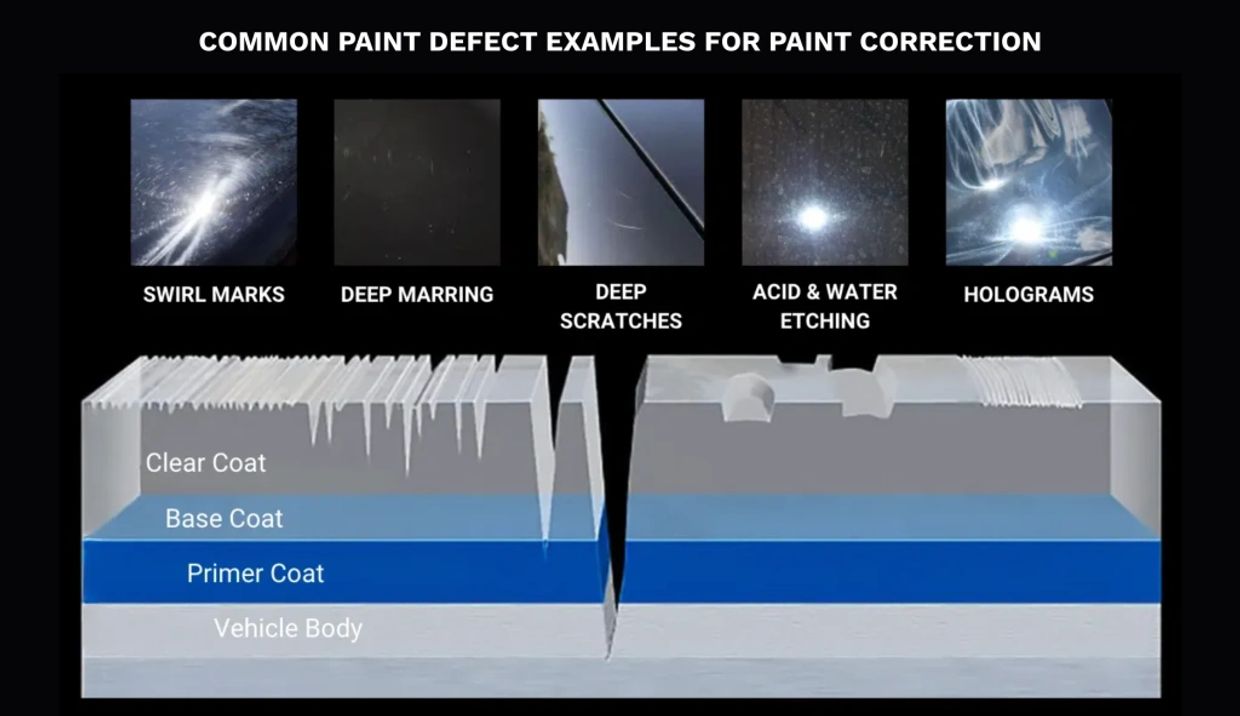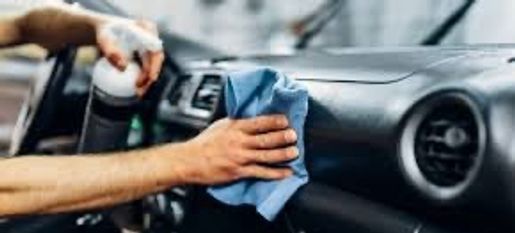About Apex Auto Spa, LLC
PAINT CORRECTION.
Paint Correction is the process of restoring a vehicle’s paint finish to its original brilliance and clarity. It involves employing specialized tools and techniques to eliminate any imperfections on the paint’s surface, including scratches, swirl marks, oxidation, and water spots.

1. Swirl marks: These are those annoying spider-web-looking lines on the paint that often result from improper washing techniques or using abrasive sponges or towels. They're especially noticeable on darker-colored cars and can be difficult to remove without professional attention.
2. Scratches: There is much debate around what qualifies as a "minor" scratch versus a more severe one requiring paint correction. Generally, if a scratch penetrates past the clear coat and into the base coat or primer, it will require paint correction. This is because the clear coat acts as a protective layer, and once this barrier is broken, it leaves the layers underneath vulnerable to further damage.
3. Water spots: If you live in an area with hard water, you've likely experienced the annoyance of water spots on your car's finish. These spots occur when water droplets evaporate and leave behind mineral deposits that etch into the paint. Removing them requires specialized tools and products to avoid causing further damage.
4. Oxidation: This occurs when UV rays break down the paint's protective layer, leading to a faded or dull appearance. Over time, oxidation can lead to peeling or flaking of the paint, which requires more extensive repairs.
Think of it like sun damage to our skin—it starts small and seems harmless, but left unchecked, it can lead to more severe issues down the line. Now that we understand the types of damage addressed through paint correction, let's move on to how this process works.
Process of Paint Correction
1. Wash and Decontaminate
Before any correction work begins, the vehicle’s surface needs to be meticulously cleaned. This involves a thorough wash to remove dirt and debris, followed by a decontamination step using a clay bar or other products to remove embedded contaminants like tar, industrial fallout, and brake dust. Why? Because you don’t want these particles scratching the paint further during the next stages.
2. Paint Inspection
Next up is an inspection of your vehicle’s paint using specialized lights. This step identifies all the imperfections, from tiny scratches to oxidation spots. At this point, professionals assess the condition of your paint to tailor the correction process.
3. Polishing and Compounding
Here comes the fun part. Technicians use a combination of machine polishers, cutting compounds, and polishing pads to gradually remove paint imperfections. This step can take a few hours or even days, depending on the severity of the damage. Compounds are used to "cut" into the clear coat to eliminate scratches, while polish brings back the smooth, flawless finish.
A common misconception is that paint correction involves adding material to your paint. It actually removes a very microscopic layer of the top clear coat to even out the surface. No need to panic—done professionally, this process leaves your paint in better shape than when you started.
4. Finishing Touches and Protection
Once the imperfections are corrected, the final step is to add a protective coating to seal the deal. This is where a Ceramic Coating or Paint Sealant comes into play. These not only protect the newly corrected paint but also enhance its glossy appearance.
Apex Auto Spa, LLC
1102 Gateway Drive, Milton, Wisconsin 53563, United States
This website uses cookies.
We use cookies to analyze website traffic and optimize your website experience. By accepting our use of cookies, your data will be aggregated with all other user data.

Express Details Available
A maintenance detail is a regular, scheduled auto detailing service that keeps a vehicle in a consistently clean and protected state between more extensive full details. It is less expensive than a full detail and focuses on preventing heavy buildup, with services typically including a hand wash, vacuuming, surface wipe-downs, and the application of a sealant or protectant. This consistent cleaning is a form of preventive care, similar to routine health check-ups, to preserve the vehicle's appearance and value.